This article was published as a part of the Data Science Blogathon.
Introduction
Python is a popular and influential programming language used in various applications, from web development to data wrangling and scientific computing. One of the critical reasons for Python’s popularity is the wealth of libraries and frameworks available for use, which provides a wealth of functionality and helps make Python an effective tool for many different tasks.
In this article, we will take a closer look at some of the new and up-and-coming Python libraries worth keeping an eye on in 2023.
What are Python Libraries and their Benefits?
Python libraries are collections of pre-written modules that provide additional functionality for your programs. They are helpful because they allow you to reuse code across multiple projects and utilize code that has already been written and tested by others. There are libraries available for various tasks such as web development, statistical processing, image processing, and natural language processing. Using libraries can also make your code more efficient, easier to understand, and more reliable.
5 Python Libraries Not to Miss Out on in 2023
1. Hugging Face
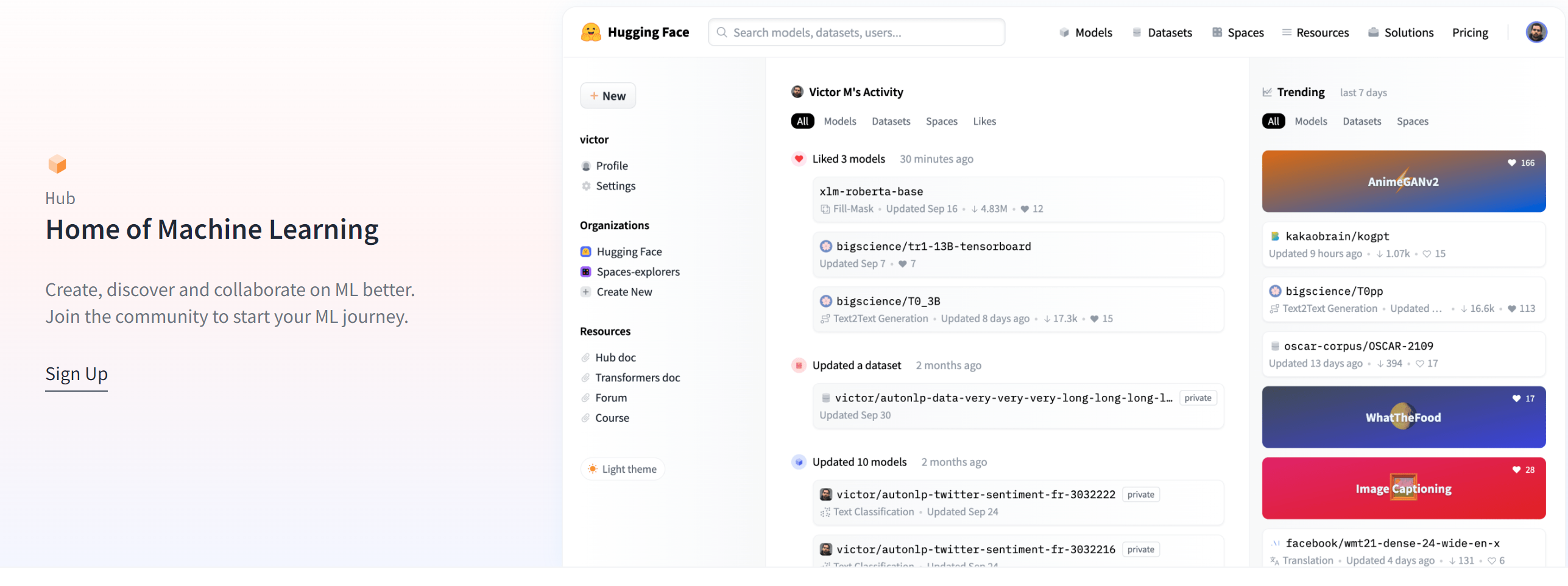
Hugging Face is a library for natural language processing (NLP) in Python. It provides tools for tasks such as text classification, language translation, and text generation and is built on top of popular NLP libraries such as PyTorch and TensorFlow. According to GitHub, Hugging Face has a rating of 4.8 out of 5 stars.
One of the critical features of Hugging Face is its wide range of NLP capabilities. It provides support for various languages and tasks and is built on top of state-of-the-art pre-trained models trained on large amounts of data. This makes it an effective tool for many NLP tasks and allows developers to get started quickly and easily. For example, Hugging Face can be used for sentiment analysis, language translation, and text generation tasks, making it a versatile library for working with text data.
Another advantage of Hugging Face is its easy-to-use API. It provides a simple and intuitive interface for working with text data and is designed to be easy to integrate into existing workflow. This makes it a good choice for developers looking for a powerful and flexible NLP library that is easy to use.
One potential con of Hugging Face is that it can be resource-intensive, as it relies on large pre-trained models for many of its tasks. This can be a problem for projects that have limited resources or need to run on low-power devices. However, for many NLP tasks, the benefits of using Hugging Face will likely outweigh the resource requirements.
2. Streamlit
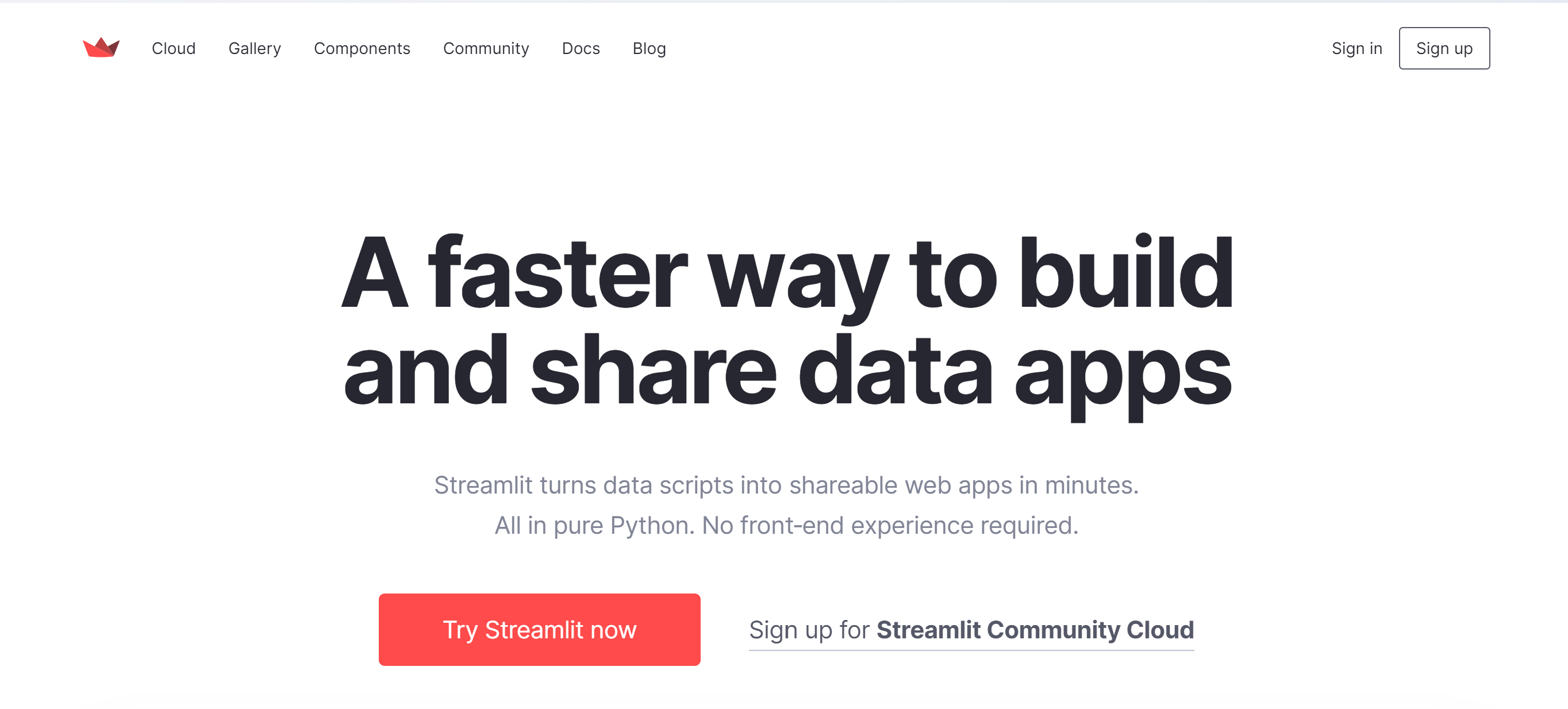
Streamlit is a library for building web applications in Python. It allows developers to create interactive, data-driven apps quickly and easily and has gained much popularity among data scientists and machine learning practitioners. According to GitHub, Streamlit has a rating of 4.8 out of 5 stars.
One of the critical features of Streamlit is its simplicity and ease of use. It has a simple interface for building web apps and allows developers to get started quickly and easily. This makes it a good choice for developers who are new to web development or who need to build apps quickly. Streamlit uses a familiar syntax and provides various tools for building interactive user interfaces, making creating visually appealing and functional web apps easy.
Another advantage of Streamlit is its ability to handle large amounts of data. It provides tools for working with data frames and visualizing data and is well-suited to data-driven applications. This makes it a good choice for data scientists and machine learning practitioners who need to build interactive apps to explore and analyze data. Streamlit provides a range of built-in charting and visualization options, as well as support for custom components, which makes it easy to create rich and informative data visualizations.
One potential con of Streamlit is that it is not as feature-rich or versatile as other web development frameworks. It is designed to be simple and easy to use, which can be a tradeoff for more advanced features. However, for many web development projects, the simplicity and ease of use of Streamlit are likely to outweigh the need for more advanced features.
3. Optuna
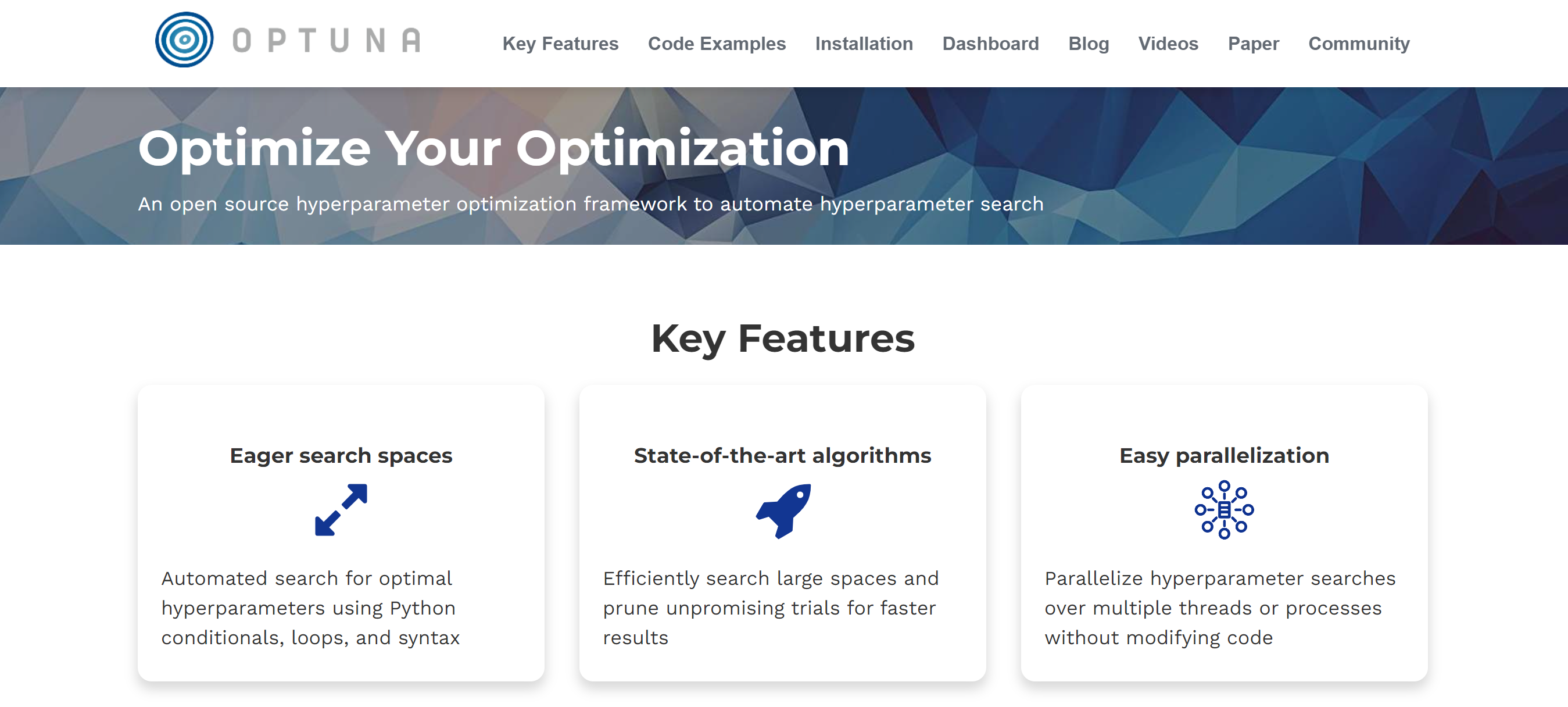
Optuna is a library for hyperparameter optimization in Python. It provides a simple and efficient way to tune the hyperparameters of machine learning models and is designed to be easy to use and integrate into existing workflow. According to GitHub, Optuna has a rating of 4.6 out of 5 stars.
One of the key features of Optuna is its efficiency and flexibility. It uses an efficient algorithm to search for the optimal set of hyperparameters and can handle many optimization problems. This makes it a good choice for developers who need to tune the hyperparameters of machine learning models and allows them to do so quickly and easily.
Another advantage of Optuna is its integration with the Python ecosystem. It is designed to be easy to use with popular machine learning libraries such as sci-kit-learn and can be easily integrated into existing workflow. This makes it a good choice for developers who are working with machine learning models in Python.
One potential con of Optuna is that it may not be the best choice for very large or complex optimization problems. It is designed to be efficient and effective for many optimization tasks, but may not scale as well as other optimization algorithms for very large or complex problems. However, Optuna is likely to be a good choice for many machine learning tasks due to its efficiency and ease of use.
4. Pytest
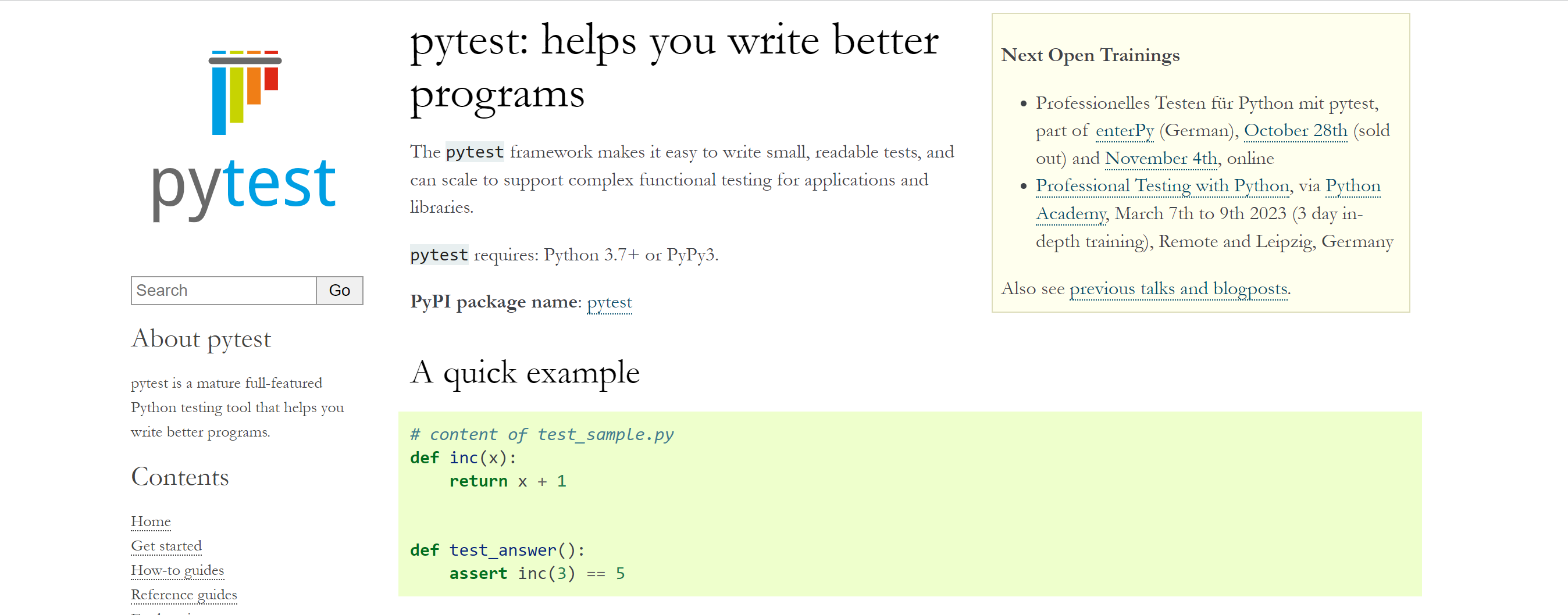
Pytest is a library for testing and debugging in Python. It provides a range of tools for writing and running tests and is designed to be easy to use and integrate into existing workflow. According to GitHub, Pytest has a rating of 4.6 out of 5 stars.
One of the key features of Pytest is its simplicity and ease of use. It provides a straightforward interface for writing and running tests and is designed to be easy to integrate into existing workflow. This makes it a good choice for developers who need to write and run tests as part of their development process and allows them to do so quickly and easily.
Another advantage of Pytest is its flexibility and extensibility. It provides a wide range of tools for writing and running tests and can handle a variety of testing scenarios. This makes it a good choice for developers who need to write and run tests for a wide range of applications.
One potential con of Pytest is that it may not be as feature-rich as other testing frameworks. It is designed to be simple and easy to use, which can be a tradeoff for more advanced features. However, for many testing tasks, the simplicity and ease of use of Pytest are likely to outweigh the need for more advanced features.
5. PyO3
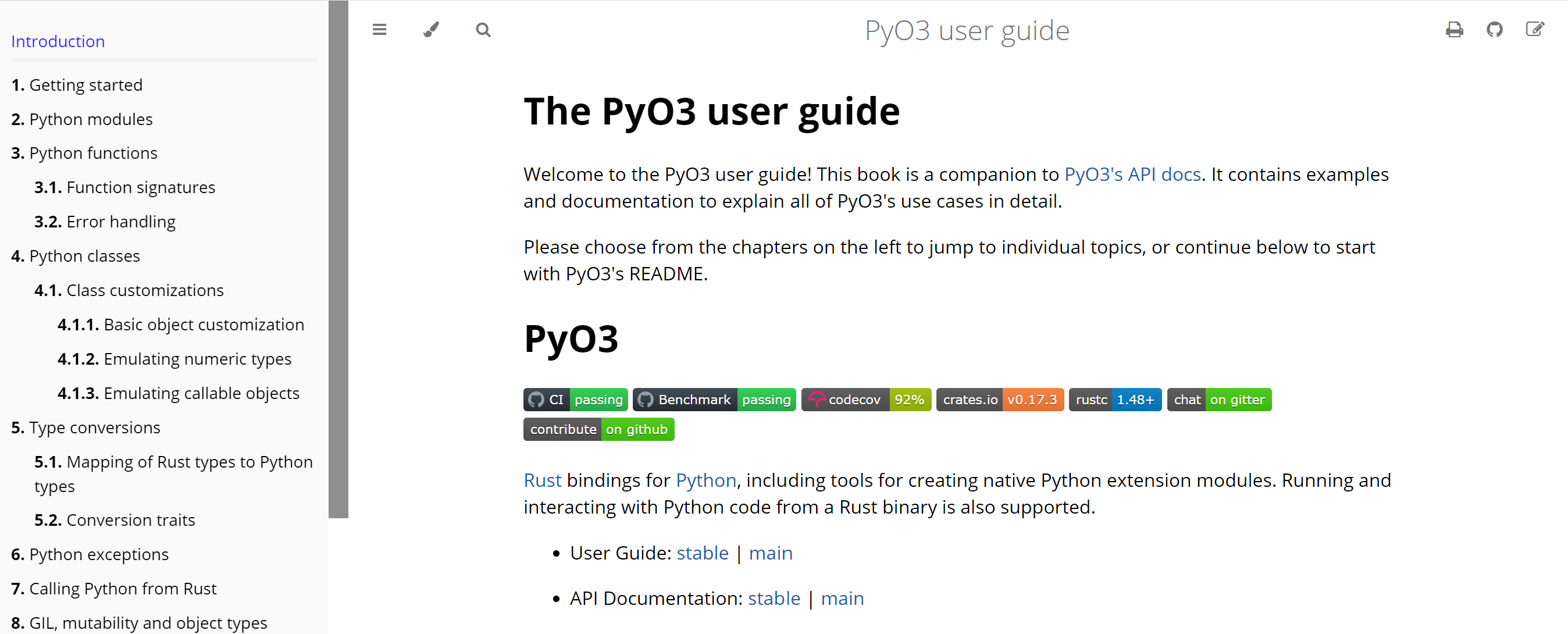
PyO3 is a library for interfacing with Rust code in Python. It allows developers to call Rust code from Python and vice versa and is designed to be easy to use and integrate into existing workflow. According to GitHub, PyO3 has a rating of 4.6 out of 5 stars.
One of the key features of PyO3 is its ability to integrate Rust code into Python seamlessly. It provides a simple and intuitive interface for calling Rust code from Python and allows developers to take advantage of Rust’s performance and security benefits without having to rewrite existing code. This makes it a good choice for developers using Rust code in their Python projects.
Another advantage of PyO3 is its compatibility with the Python ecosystem. It is designed to be easy to use with popular Python libraries and frameworks and can easily integrate into existing workflow. This makes it a good choice for developers working with Rust and Python.
One potential con of PyO3 is that it may not be as well-suited to larger or more complex projects as other Rust-Python integration libraries. It is designed to be simple and easy to use, which can be a tradeoff for more advanced features. However, for many Rust-Python integration tasks, the simplicity and ease of use of PyO3 will likely outweigh the need for more advanced features.
Conclusion on Python Libraries
In this article, we have looked at five new and upcoming Python libraries that are worth keeping an eye on in 2023; these libraries and libraries, in general, have been proven to provide exceptional benefits when writing Python programs, such as:
1. Python Libraries save time, as they provide tested and powerful functionality without you needing to reinvent the wheel.
2. A library is available for virtually anything, from statistical processing to web development, automated testing, and much more.
3. Python libraries are constantly being created and enhanced. The five libraries to look out for in 2023 are Hugging Face for Natural Language Processing, Streamlit for Web Development, Optuna for Hyperparameter tuning, Pytest for testing automation, and Py03 to integrate the Rust programming language.
Whether you are working on machine learning projects, web apps, or testing and debugging, these libraries provide a range of options for Python developers.
Do you know libraries for time-series analysis? If not, get to know them here.
The media shown in this article is not owned by Analytics Vidhya and is used at the Author’s discretion.




